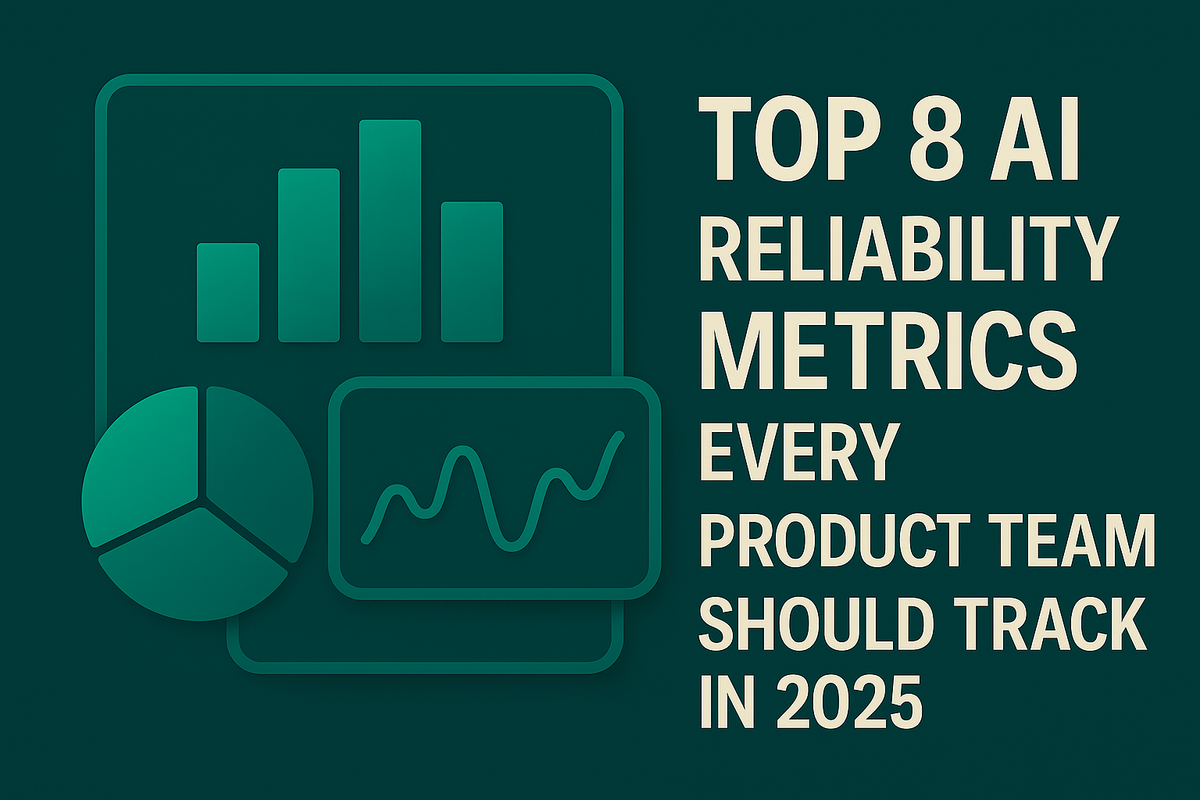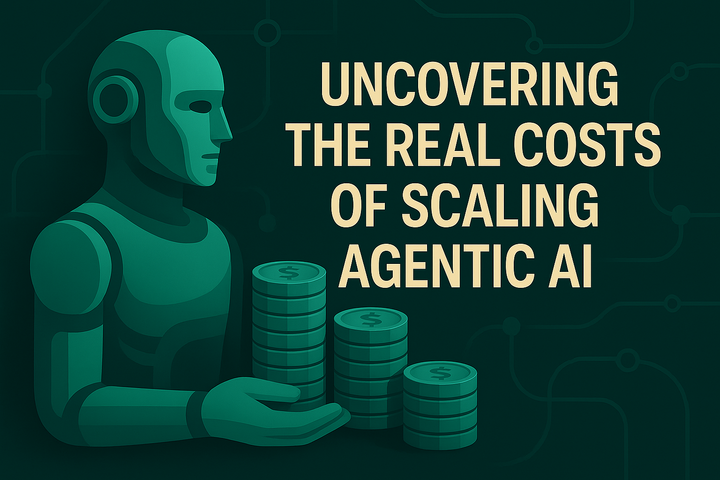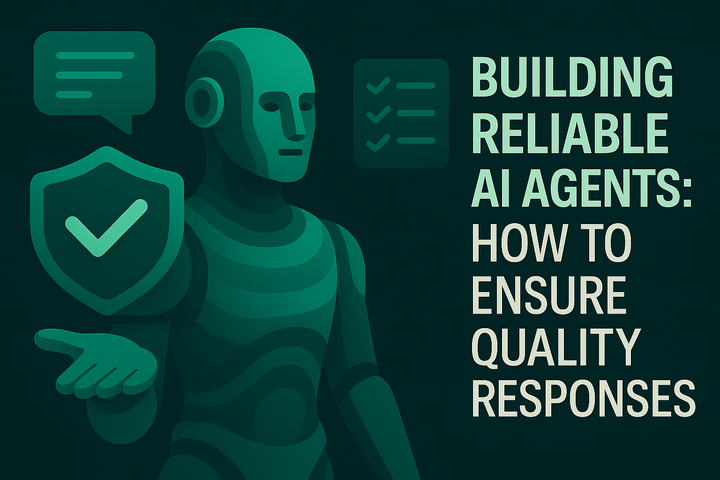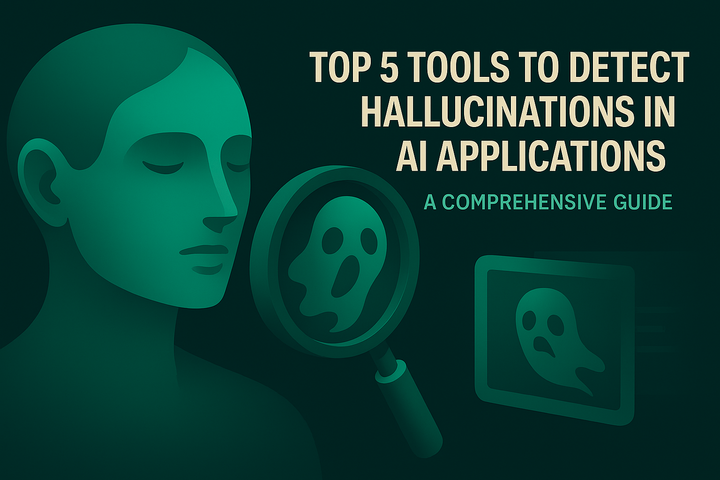Top 8 AI Reliability Metrics Every Product Team Should Track in 2025

Artificial intelligence is no longer a futuristic promise today, it powers mission-critical workflows across industries, from healthcare and finance to customer service and logistics. Yet, as AI systems become increasingly agentic and autonomous, their reliability becomes the defining factor that separates successful deployments from costly failures. In 2025, product teams must go beyond traditional accuracy scores and adopt a comprehensive set of reliability metrics to ensure their AI agents perform consistently, safely, and efficiently in real-world conditions.
This guide presents the top eight AI reliability metrics every product team should track, complete with definitions, technical context, and actionable strategies. We will also explore how Maxim AI enables teams to monitor, evaluate, and improve these metrics, supporting robust AI quality assurance at scale.
Table of Contents
- Consistency and Determinism
- Robustness Under Adversarial Conditions
- Uncertainty Quantification and Confidence Calibration
- Temporal Stability and Performance Drift
- Context Retention and Coherence
- Coverage
- Safety Violation Frequency
- Cost per Correct Token
1. Consistency and Determinism
Definition: Consistency refers to an AI agent’s ability to provide reliably similar responses to semantically similar queries, regardless of phrasing, timing, or user.
Why It Matters: Inconsistencies such as delivering different answers to the same question on different days undermine user trust and can lead to operational errors. Determinism is especially crucial in regulated industries or customer support, where reproducibility of advice or decisions is mandatory.
How to Measure:
- Systematically test agents with paraphrased and reordered queries.
- Track response similarity using metrics such as Jaccard similarity or embedding-based cosine similarity.
- Leverage tools like Maxim’s Agent Simulation and Evaluation to automate multi-turn scenario testing.
Further Reading:
2. Robustness Under Adversarial Conditions
Definition: Robustness measures an agent’s ability to handle unexpected, malformed, or adversarial inputs gracefully.
Why It Matters: Real-world users introduce typos, ambiguous requests, and edge-case scenarios. Agents that fail under such conditions can degrade user experience and expose organizations to risk.
How to Measure:
- Test with adversarial and noisy inputs, including misspellings, slang, and incomplete data.
- Monitor failure rates and fallback behaviors.
- Use Maxim’s Experimentation Playground to simulate edge cases and adversarial scenarios.
Further Reading:
3. Uncertainty Quantification and Confidence Calibration
Definition: Quantifies how well an AI agent can assess and communicate its own uncertainty, aligning confidence scores with actual correctness.
Why It Matters: Overconfident errors are far more damaging than honest uncertainty. Well-calibrated agents escalate ambiguous cases to humans and prevent the propagation of misinformation.
How to Measure:
- Compare predicted confidence levels to actual accuracy using calibration curves and Brier scores.
- Track escalation rates and the appropriateness of uncertainty signals.
- Integrate Maxim’s Online Evaluations for real-time monitoring of confidence and decision boundaries.
Further Reading:
4. Temporal Stability and Performance Drift
Definition: Temporal stability tracks whether agent performance remains consistent over time, while performance drift identifies gradual degradation due to changing data distributions or user behavior.
Why It Matters: AI agents may perform well initially but degrade as data, user expectations, or environments shift. Early detection of drift is essential for ongoing reliability.
How to Measure:
- Monitor key metrics (accuracy, latency, error rates) over time.
- Use statistical process control charts and drift detection algorithms.
- Leverage Maxim’s Observability Platform for longitudinal analytics and alerting.
Further Reading:
5. Context Retention and Coherence
Definition: Measures whether an agent can maintain relevant context and logical coherence across multi-turn conversations or extended workflows.
Why It Matters: Context loss leads to broken interactions, repeated questions, and user frustration especially in customer support, healthcare, and enterprise automation.
How to Measure:
- Evaluate agent memory with long, multi-turn test cases.
- Track context-switching errors, contradictions, and context drop rates.
- Use Maxim’s Agent Tracing to trace and debug context retention.
Further Reading:
6. Coverage
Definition: Coverage assesses the breadth of scenarios, intents, and tasks an agent can reliably handle, relative to the requirements of its domain.
Why It Matters: High coverage ensures that agents can support the full range of user needs and business requirements, reducing manual intervention and blind spots.
How to Measure:
- Map test suites to business requirements and user journeys.
- Track the percentage of scenarios where the agent delivers correct and complete responses.
- Use Maxim’s Dataset Curation to systematically expand and test coverage.
Further Reading:
7. Safety Violation Frequency
Definition: The rate at which an agent produces outputs that violate safety, ethical, or compliance guidelines (e.g., toxicity, bias, data leakage).
Why It Matters: Safety violations can result in regulatory penalties, reputational damage, and direct harm to users. Monitoring is essential for responsible AI deployment.
How to Measure:
- Integrate automated and human-in-the-loop evaluation for safety and compliance.
- Track incident rates, severity levels, and time to remediation.
- Use Maxim’s Human Annotation and Guardrails to flag and address safety violations.
Further Reading:
8. Cost per Correct Token
Definition: Measures the operational cost (compute, API, infrastructure) incurred for each correct output token or action performed by the agent.
Why It Matters: As AI adoption scales, cost efficiency becomes a critical dimension of reliability. Teams must optimize for both quality and cost, especially in high-volume applications.
How to Measure:
- Track API call costs, latency, and output correctness.
- Benchmark cost per correct token across models and configurations.
- Use Maxim’s Analytics Dashboards to compare cost efficiency across experiments.
Further Reading:
Maxim AI: Your Partner for Comprehensive AI Reliability
Maxim AI provides an end-to-end platform for experimentation, simulation, evaluation, and observability, enabling product teams to track, analyze, and improve all eight reliability metrics with precision. Key features include:
- Experimentation Playground: Rapidly iterate on prompts, agents, and workflows with versioning and A/B testing.
- Agent Simulation and Evaluation: Run large-scale simulations and evaluations across custom scenarios.
- Agent Observability: Monitor real-time traces, context retention, and safety alerts in production.
- Human-in-the-loop Evaluation: Seamlessly integrate human feedback for nuanced quality and safety checks.
For an in-depth look at how Maxim AI accelerates agent reliability, explore these resources:
- AI Agent Quality Evaluation
- AI Agent Evaluation Metrics
- Evaluation Workflows for AI Agents
- Maxim Documentation
- Case Studies
Conclusion
Tracking and optimizing AI reliability metrics is essential for delivering trustworthy, high-performing AI products in 2025 and beyond. By adopting a holistic approach and leveraging platforms like Maxim AI, product teams can ensure their agents not only deliver accurate results, but do so consistently, safely, and efficiently, building the foundation for long-term user trust and business success.
For a deeper dive into AI reliability and observability, read authoritative resources such as Google’s Responsible AI Practices and NIST’s AI Risk Management Framework.
Ready to elevate your AI reliability? Get started with Maxim AI or book a demo today.


